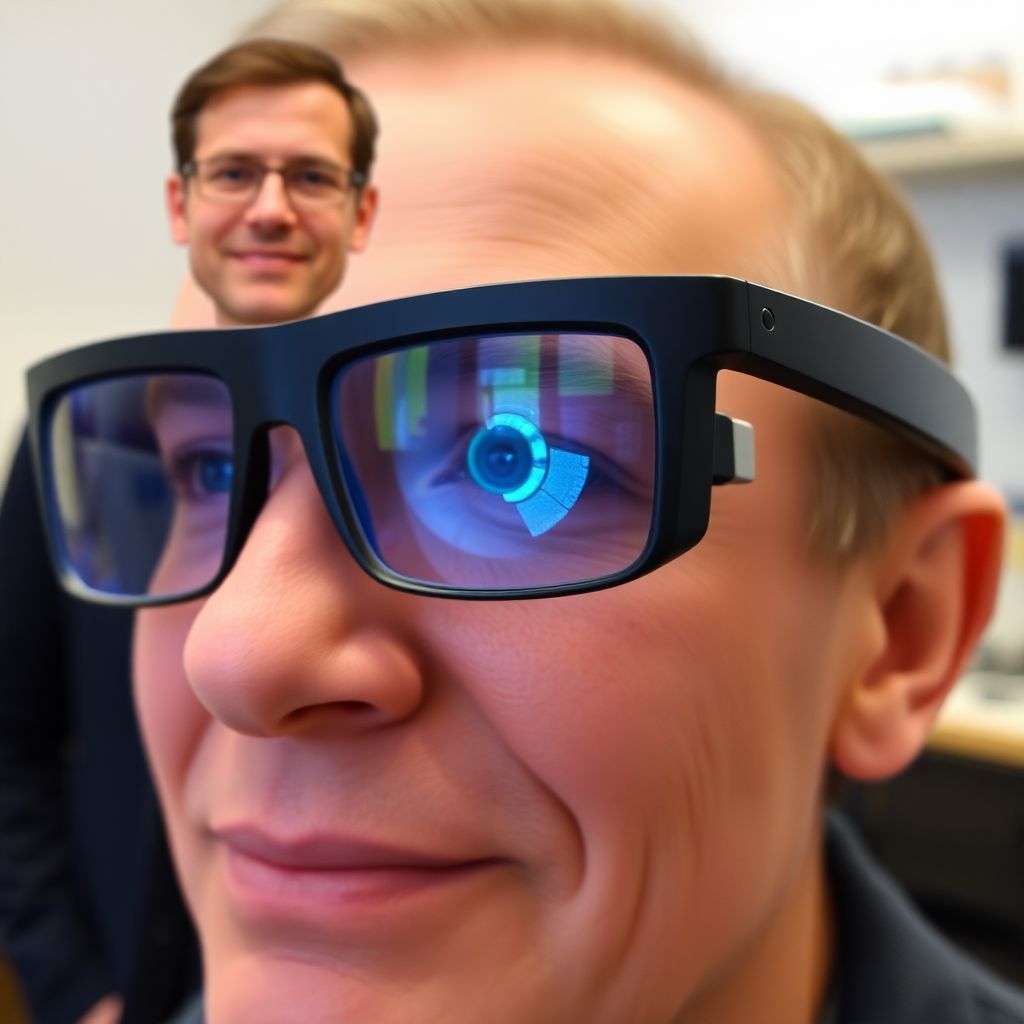Stanford Researchers Restore Partial Vision to the Blind Using Light-Activated Eye Implant
In a groundbreaking advancement in vision restoration, scientists at Stanford University have successfully returned functional vision to individuals suffering from advanced macular degeneration—thanks to an innovative wireless eye implant powered by light. This medical breakthrough combines a microscopic chip and augmented-reality (AR) glasses to transform light into visual signals, enabling formerly blind patients to read, recognize faces, and navigate their surroundings once again.
The device, known as the PRIMA system, represents a significant leap forward in the treatment of degenerative retinal conditions. Developed under the leadership of physicist and biomedical engineer Daniel Palanker, the system consists of an ultra-thin subretinal implant and specialized AR glasses. Together, they bypass the retina’s damaged photoreceptors—the cells responsible for capturing light—and instead stimulate the inner retinal neurons directly.
Unlike traditional retinal implants that rely on external wiring or bulky power sources, the PRIMA implant is powered entirely by near-infrared light. The eyewear captures the visual scene, converts it into a near-infrared image, and projects it onto the retina where the implant resides. The chip, roughly the size of a grain of rice, then translates this light into electrical impulses that the brain can interpret as visual information.
This process essentially rewires the eye to transmit visual data through a new pathway, offering patients with central vision loss a chance to regain meaningful sight. While peripheral vision often remains intact in macular degeneration, the loss of central vision significantly disrupts daily activities like reading, recognizing faces, and driving. The PRIMA system addresses that gap.
Early clinical trials have yielded promising results. Patients fitted with the implant regained the ability to identify letters and numbers, with some even managing to read short words. While the restored vision is not yet equivalent to normal sight, it offers a dramatic improvement in quality of life. Clinical participants described the experience as transformative—comparing it to opening a curtain onto a world they thought was lost forever.
The underlying technology relies on photovoltaic principles, similar to how solar panels convert light into electricity. This ensures the implant remains wireless and minimally invasive, reducing surgical risks and making it more adaptable for broader patient use.
The journey to this success has been long and filled with challenges. Researchers spent years developing a chip that could be both small enough to implant safely in the retina and powerful enough to generate clear visual signals. Stanford’s team optimized the chip’s sensitivity to infrared light and refined the AR glasses to produce accurate, real-time images.
One of the key advantages of the PRIMA system is its modularity. Because the implant is passive and powered externally, updates to the image-processing software or improvements in the AR glasses can continually enhance the user’s vision without additional surgeries. This makes the technology future-proof and adaptable as imaging and AI capabilities evolve.
The success of PRIMA opens new possibilities for treating not only macular degeneration but potentially other retinal disorders such as retinitis pigmentosa or diabetic retinopathy. Researchers are already exploring how the technology could be customized for a wider array of visual impairments.
Beyond the medical implications, this advancement signals a broader shift in how human senses may be augmented or restored using bioelectronic interfaces. As innovations in neuroprosthetics continue to evolve, we may soon see similar devices for restoring hearing, touch, or even enhancing natural sensory capabilities.
Currently, the PRIMA system is undergoing further clinical evaluation in both Europe and the U.S., with researchers working to refine image resolution and improve user training protocols. Feedback from patients is being used to tailor the device to individual needs, ensuring that future iterations will be even more effective.
The emotional and psychological impact of regaining sight, even partially, cannot be understated. For patients who had resigned themselves to a life of darkness, this technology offers not only visual input but a renewed sense of independence and hope.
As with any emerging medical technology, there are still hurdles to overcome. The cost of the device and surgery, regulatory approvals, and accessibility in wider medical markets remain significant challenges. However, as production scales and more clinical data confirm its effectiveness, the PRIMA system could become a standard treatment for millions affected by vision loss worldwide.
In conclusion, Stanford’s light-powered eye implant marks a milestone in the intersection of neuroscience, optics, and wearable tech. By converting light directly into vision, this innovation has brought us a step closer to reversing blindness—and perhaps, in the future, even enhancing human vision beyond its natural limits.

